You have probably read that the average price paid for a new vehicle approaches $50,000. How about one that costs less than half as much as that?
The Hyundai Venue stickers for under $20k to start and even if you buy a loaded, top-of-the-line example, the MSRP is still less than half what the average new vehicle sold for last year.
So – what’s the catch?
The Venue is Hyundai’s smallest crossover and one of the least expensive new vehicles on the market.
It’s kind of like what small crossovers such as the Toyota RAV4 and Honda CRV used to be about 20 years ago.
Just nicer.
Base price is $19,900 for the SE trim, which comes with all the essentials – including AC, cruise control and a six speaker stereo system. This trim comes standard with 15 inch wheels – which means you’ll pay less for tires. And rear drum brakes, which means you’ll never pay for warped rear brake rotors or calipers.
The SE also still comes with an ignition key you insert and turn to start the engine. One that can be run through the wash without hurting it, if you forgot to take it out of your pants pocket.
One that can be replaced at any hardware store for less than $15, too.
A mid-trim SEL adds a sunroof, leather trim, automatic climate control and rear disc brakes – plus two-sizes-larger 17 inch wheels and pushbutton, keyless ignition. This one stickers for $21,900.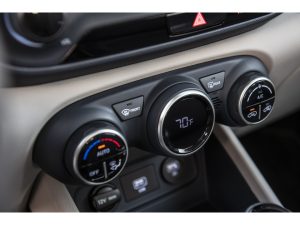
The top-of-the-line Limited (MSRP $23,150) comes with heated seats, LED headlights, a wireless phone charger and GPS navigation, digital main gauge cluster and all of the features that are included with the SEL.
A 1.6 liter four cylinder engine without a turbocharger is standard in all Venues, along with what Hyundai calls an Intelligent Variable Transmission, which is a type of continuously variable (CVT) automatic transmission that mimics the operating characteristics of a six-speed automatic.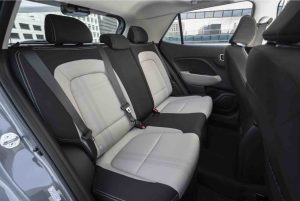
So, what’s the catch?
The Venue does not offer AWD – which is unusual among crossovers. But that may not be a problem if you’re looking to not pay for it.
What’s New For 2024
The Venue carries over unchanged from last year.
What’s Good
Hard to argue with the price.
Hard to argue with the space – for the size.
No turbo to cost you money down the road, after the warranty expires.
What’s Not So Good
Not so great gas mileage for such a small – and small engined – crossover.
CVT automatic-only.
A bit less cargo space than other – slightly larger – small crossovers such as the Chevy Trax and Nissan Kicks (both of which cost more).
All Venue trims come standard with the same drivetrain: A 1.6 liter four paired with a continuously variable (CVT) automatic driving the front wheels only.
This latter may be why the Venue’s four isn’t turbocharged.
AWD adds weight – and while the Venue is relatively light for a modern vehicle, 2,612 lbs. for a subcompact-sized crossover is pretty heavy relative to what small cars weighed in the past. As a point of comparison, back in 1980, a VW Rabbit weighed just under 2,000 lbs.
But the good news is the Venue would be even heavier if it were AWD – and then it would need a turbo to haul itself around.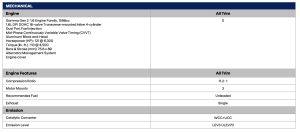
The fact that this Hyundai’s little four isn’t turbocharged or direct-injected is also a big part of the reason why it’s one of the few new vehicles available for less than $20k to start.
Turbos do add power – but it doesn’t come for free. They also add potential expense – when the turbo or its peripheral parts need to be replaced.
And because turbos pressurize the engine – which increases stress on the engine’s internal parts. If they’re not built to handle it, they are apt to wear (and break) sooner rather than later; it’s just in the nature of things – the same way that a helium party balloon is vulnerable to popping.
The Venue’s engine – which makes 121 horsepower – is paired up with a CVT automatic transmission. The good news is it doesn’t feel or sound like one. Hyundai has programmed it to “shift” as if it had gears – which it doesn’t, being a CVT. So it’s hard to tell – by sound or feel – that it isn’t.
The bad news is it’s still a CVT – and while the long-haul reliability of these types of transmissions has improved, they don’t have the long-term track record for being as reliable as conventional automatics (with gears, that do shift).
CVTs also usually make an engine that doesn’t make much power feel even less powerful, because they lack the torque multiplication of a conventional automatic transmission (via the torque converter).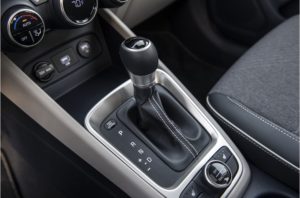
And, of course, there’s not much torque to multiply here, regardless.
Just 113 ft.-lbs. – and it’s not fully available until 4,500 RPM.
If this little Hyundai were available with a manual transmission, the driver would be better able to make use of what power is available. But manual-equipped vehicles tend to not perform as well on government fuel economy certification tests – because they can’t be programmed to do well on the test. As by shifting up into higher (and overdrive) gear as soon as possible.
The problem is that in the real-world, the driver will often need more acceleration and push down more on the accelerator to get it. This typically forces the automatic to downshift – thus negating the programming and the putative mileage advantage.
This small crossover – with a very small engine – still only manages 29 city, 33 highway, even with the CVT. It’s not terrible mileage. It’s just that it’s remarkable that’s all you get out of such a small crossover with such a small engine, which is paired with a CVT.
But then again, it’s heavy.
As a point of reference, a similarly small older crossover – something like a Toyota RAV4 from the early 2000s with AWD weighed a couple hundred pounds less.
Because it wasn’t weighed down by all the federal regulations and mandates that have been imposed on vehicles during the past 25-30 years.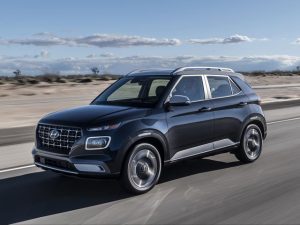
On The Road
The Venue is peppier-feeling than you might expect given how heavy it is relative to how powerful it isn’t.
Zero to 60 in about 9 seconds is pretty peppy. Relate to to 11 seconds-plus it took for the last-generation Prius to get to 60 (the new Prius is now as quick as some V8 muscle cars were back in the ’70s).
It is peppy enough, at any rate, for what it is. That being an inexpensive way to get around in your own vehicle – as opposed to waiting for a ride in someone else’s, because you can’t afford your own vehicle.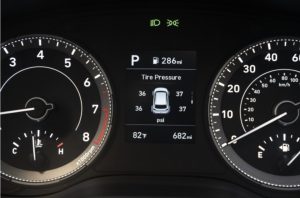
It has no trouble getting to get-in-trouble speeds, either. Plenty of speed for more than just poking along in stop-and-go-traffic. Try it. You’ll be pleasantly surprised. Especially by the way the CVT automatic doesn’t feel or sound like one. Floor the accelerator and the engine revs and the CVT appears to shift; the revs drop and then they rise again – until the next upshift. The weird-feeling (and unpleasant sounding) no-shifting action of the typical CVT are absent here.
A manual would be more fun – but this isn’t bad.
The weight is also an asset in that this little crossover doesn’t feel flimsy. It feels solid and weighted – because it is. Small it may be. But it has the heft of a large sedan from the ’70s.
And it’s not even that small. Just relatively – compared with everything else out there now. But if you have a look at the specifications, in terms of length and width, this “small” crossover has about the same overall footprint as a RAV4 from the early 2000s and while those are fine vehicles, they feel light, especially at 75 MPH.
The older small crossover are more agile-feeling.
But you’ll be surprised (again) by how stable-feeling this small crossover is, especially in the curves. Hyundai doesn’t market the Venue as a performance crossover but – try it and see – it performs at a much higher level than the specs suggest.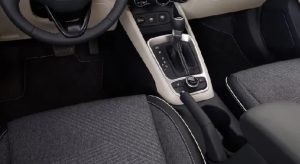
And while there’s no manual transmission, there is a manual emergency brake lever. This is almost as startling (in a good way) to find as a third pedal in that almost all new vehicles have an electrically actuated automatic parking brake. What’s the difference? It’s similar to the difference between a manual and an automatic transmission in that you have more control over the vehicle. An electric parking brake is Off or On. You can’t modulate the braking force applied, by hand.
By feel.
With a pull-up emergency brake lever, you can.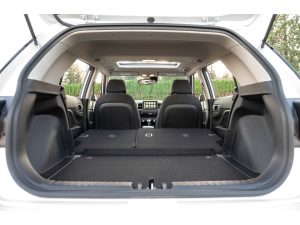
And that’s not just fun. It’s safer. In the actually safer sense. You can use the emergency brake to control the vehicle if the hydraulic brakes fail. You can prevent the rear wheels (which are the ones controlled by the emergency brake lever) from locking up, by easing up on the lever. And – of course- you can use the lever to lock the brakes up, in order to execute a 90 degree turn.
Or a 180 degree turn.
And that’s very fun!
At The Curb
The Venue is small – by current standards. But not by recent-historical standards.
It is 159.1 inches long overall, which places it squarely in the subcompact crossover class, of which there aren’t many anymore. Even the Chevy Trax is a significantly larger/longer rig, at 178.6 inches – and it has an even smaller (1.2 liter, three cylinder) engine.
But it’s about the same as a 2005 RAV4, which was 166.6 inches long and that’s probably the right comparison, as the Venue is today’s version of what the RAV4 was, back then. It isn’t that anymore. The current RAV4 is a relatively huge vehicle – it’s more than 180 inches long, or almost two feet longer than the Venue. It’s also just shy of $30k to start – or almost $10k more expensive than the Venue and nearly as expensive as some entry-luxury vehicles.
The Venue offers luxury features – at an entry level cost.
A top-of-the-line Venue Limited has climate control AC, heated seats and wireless phone charger. It also has things you used to have to spend luxury car money to get, such as powerful LED headlights that turn night into day (try them and see) and a digital instrument cluster, along with the now-commonplace secondary LCD display/interface for the stereo. Both of these latter used to be exclusive to high-end luxury cars such as the Mercedes S-Class as recently as about ten years ago.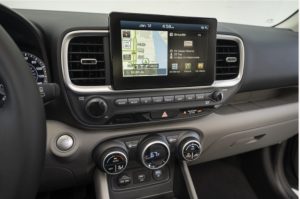
The main negative here – if it is one – is that the Venue has less cargo space than compact-sized models such as the Chevy Trax and Nissan Kicks. But it still has a lot of space for the size: 18.7 cubic feet behind its second row and a total of 31.9 cubic feet with the second row folded forward. It’s enough space to make this small crossover a practical crossover that’s big enough – on the inside – to serve as a small family’s primary vehicle.
It also costs less than either the Trax or the Kicks – and has noticeably more generous rearseat legroom, too.
The Rest
As mentioned earlier, the base trim Venue SE comes with rear drum brakes – and 15 inch wheels. These are also becoming as hard to find in anything new as a manual transmission- and that’s too bad.
Drum rear brakes are much sturdier than disc brakes.
It is easy to warp a rear brake rotor (and thereby, ruin it) by over-tightening lug nuts, which tire shops do routinely when reinstalling the wheels after mounting new tires. And – speaking of tires – 15 inch tires cost less because they’re smaller. They also impart less rolling resistance, which reduces fuel consumption.
But the real benefit is the taller sidewall, which absorbs more road shock and gives you a softer, smoother ride.
The Bottom Line
If you’re wanting a small crossover like they used to make ’em, Hyundai still does.
. . .
If you like what you’ve found here please consider supporting EPautos.
We depend on you to keep the wheels turning!
Our donate button is here.
If you prefer not to use PayPal, our mailing address is:
EPautos
721 Hummingbird Lane SE
Copper Hill, VA 24079
PS: Get an EPautos magnet or sticker or coaster in return for a $20 or more one-time donation or a $10 or more monthly recurring donation. (Please be sure to tell us you want a magnet or sticker or coaster – and also, provide an address, so we know where to mail the thing!)
If you like items like the Keeeeeeev T shirt pictured below, you can find that and more at the EPautos store!



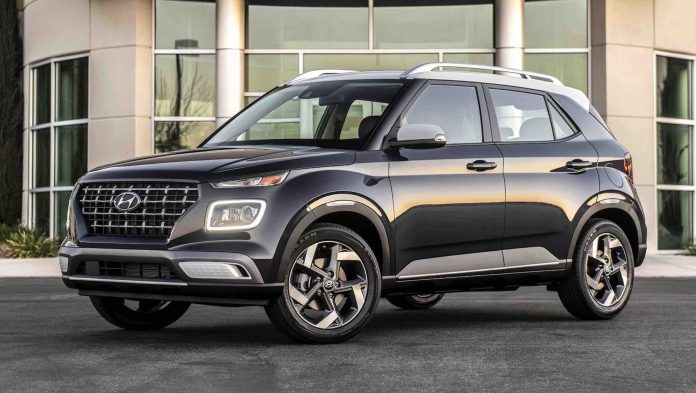




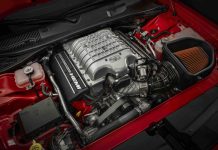






1995 VW Golf available with a 5 speed manual trans and diesel…..
The VW is better quality, is better engineered, gets better fuel economy, suffers less depreciation so cost of ownership is lower….
In 1995 msrp $11,490…in 2024 dollars…$23,396
In 2024 everything is getting worse….
1995 VW Golf weighed 2400 lb.
I’m glad there’s another affordable option for average people. It’s great that it’s non turbo, but too bad it’s CVT only.
Imagine what it could be if it was a thousand pounds lighter with a manual and/or diesel options.
I’d imagine you’d have to be anywhere but the USA to find a car like that… LOL.
How many other similar vehicles are available like this that are cheaper than this Hyundai?
None I’m aware of….
Hyundai always gave more features for the price paid…so people buy them….but the quality is lower…..
Hyundai Pony….
Hyundai Motors created the Pony, basing its design on the Austin Marina…it was cool it had RWD…
Rejected in the U.S., the Hyundai Pony became Canada’s dark horse
This car came out in December of ’83 as a 1984 model. It cost $5,994 dollars cad….about $4495 U.S….about $13,342 U.S….in 2024 dollars…. and that was thousands less than a Toyota Corolla or a Honda Civic.
$13,342…..bring it back for cheap transportation….
https://www.hagerty.com/media/car-profiles/hyundai-pony/
The issue I have with Hyundai is engine failures…..My friend had a 2.4 litre 4 cylinder Coupe, it blew up on the highway at 60 mph, it had about 130,000 miles on it.
The theory is that under cornering if the oil is low the balance shaft/oil pump assembly of the GK4E may lose oil momentarily… gradually this trashes the bearings in the oil pump/balance shaft assembly and of course if the oil pump starts to gradually work less efficiently, the oil delivery to the bearings (especially connecting rod bearings) goes down trashing them as well. The GK4E oil pump also has to spin twice as fast engine rpm wise, than the GK4D pump.
They don’t report that much more vibration with the GK4D oil pumps. One poster built a oil pressure test rig to test the difference between the GK4E and GK4D pumps. He found that a 9mm spacer needs to be put into the oil pressure relief valve spring to bring the pressure spec up to the same as the GK4E.
https://www.hyundai-forums.com/threads/2-4-engine-failures.668998/
VW makes better engines, so does Toyota.
Had a 2011 Sonata 2.0 turbo. Very quick car, very good mileage if you didn’t hammer it. The electrics were a bit dodgy, as it ate bulbs and batteries like no car I’ve ever owned.
Then the motor died. Stuck a magnet into the dipstick well and found metal shavings clinging to the magnet, which is a very bad sign. Then it got recalled, my car sat in a back lot of a Hyundai dealership for six months (they did pay for a rental for that entire time) awaiting a new motor and I quickly sold it as soon as I got it back.
I wouldn’t trust one of these cars.
2. Rod bearings failure
You can rarely find an engine with rod-bearing problems. But the 2.4L Theta II is exactly this kind of engine. The earlier models of this unit were made with poor debris cleaning at a certain manufacturing stage and this debris clogged the oil lines. Sometimes, the oil was just blocked and the rod bearing failed to lead to a complete engine failure.
Actually, the dying rod bearing will not be very hard to locate. The sound of the engine becomes really annoying because of the constant screaming or whining engine. But Sonatas and Santa Fes have been really good soundproofed, so you won’t hear them dying.
Checking the rod bearings every time you provide your vehicle with regular maintenance is a very good idea.
https://cararac.com/blog/hyundai-2-4-engine-problems-and-durability.html
I know a mechanic who had a customer come in with a Hyundai….out of warranty….. with a blown engine…..the cost to replace the engine was so high….the customer just sold the car to the mechanic for a low price…under $1000?….the mechanic took it to a dealer to see if they would replace the engine in their crappy car…they said no….he took it to another dealer….they replaced the engine for free…..if he sells it now, he will have made $1000’s of dollars…..
Like to gamble?….search out Hyundai’s with blown engines..buy them….and try copy this strategy……
There is an opposite to these Hyundai engines…the 2.0 lt. na 4 cylinder engine in the VW Mk3 and Mk4 Golfs/Jettas…..it is a low rpm, low end torque engine….
These engines can be bought very cheaply because there is no demand/market for replacement engines because they don’t fail…last a very long time…..
For example the VW Mk3 GTI had no recalls and no problem areas….it was also a successful track race car…in ITB class…. and a great rally car……
In contrast there is a market for the older na 4 cyl. Honda engines….they are high rpm engines…wear out, start burning oil….so there is a demand for replacements…..
The 2.4 L Toyota 2AZ FE might be the worst engine ever made.
Right…….Common 2.4 2AZ-FE Engine Problems
Spark Plug & Coil Failure
High Oil Consumption
Cylinder Head Bolt Failure
Head Gasket Failure
Low Lifespan
https://carsandwrenches.com/toyota-2-4-2az-fe-engine-problems/
but….Toyota lovers will say they are the best engines….lol
I had a 1980 Toyota Corolla RWD with a 3TC engine…it was a good engine….the new ones…no thanks….
I prefer VW 4 cylinder engines….
The 3TC was cool…… 1971 Corolla “Peanut” Drag Monster with a 9500rpm 3TC engine Making 600whp
https://www.youtube.com/watch?v=jdjnVhLsS6A
This 1971 Corolla was a great car…the new cars are all plastic and electronic junk….
You need this Corolla for commuting….very quickly….
Kinda reminds me of my late wife’s Kia Sportage which was a great inexpensive car but was way underpowered for its size.
Thanks for the review on this! My neighbors across the street have two of them. The grandfather has a maroon one, and the young lady has a white one. She had a silver Venue, but someone rear ended that one; she liked it so much that she soon thereafter got the white one she now has. I’ve been curious about this vehicle for a long time now.
BTW, is it just the regs keeping manuals out of US vehicles these days? The reason I ask is that Europe has stricter regs than we do, yet manual trannies are still common over in the Old World. How come they’re not more common here with our more lax regs? Besides, if one short shifts a manual while being easy on the gas, one can get good mileage out of a manual-better than with any automatic or CVT.
BTW, I looked up the specs for my 2015 Ford Focus, and its curb weight is 2,932 lbs. I can’t believe the Venue weighs SO MUCH for such a small vehicle!
My pleasure, Mark!
I was pleasantly surprised by this little crossover. Dawn has an ’05 RAV4 and we both like it a lot. This one’s similar – just new. I wish there were more like it.
Yeah, it’s a good option for anyone looking for something practical at an affordable price! Like I said, the one neighbor across the street got herself another Venue after her first one was wrecked.
Eric,
If you have time, could you please tell us why manual transmission are still prevalent in Europe? After all, their regulations are stricter than ours; if the regs keep manuals off the market here, why doesn’t the same hold true for Europe? Also, why wouldn’t automakers offer manuals, since they can be driven economically? If you’re gentle on the gas and short shift a manual, you can get good fuel economy.
Maybe N. American drivers are too stupid…
In Europe they never had the clutch out… no start switch…you have to push the clutch in to start the car…..In Europe they were smart enough to not crank the engine unless in neutral or clutch in….
In N. America Ford had too many warranty claims for damaged reverse gears in manual transmissions…..people would jam them into reverse before the car was fully stopped and grind/damage reverse gear……Ford had to tell people….wait 2 seconds before engaging reverse, with the car fully stopped…..
There was probably too many complaints, warranty claims, over slipping clutches….because people are too brain dead to use a clutch properly….slipping the clutch, starting on hills.
Starting on hills….drivers are scared to death doing this, it requires coordination/skill, European drivers are better educated, better drivers…..
Uh, don’t people even LOOK at the owner’s manual? They spell out all this stuff in there! They’ll tell you about how to reverse properly and all that.
Also, years ago, the NJ driver’s manual (the one you study for your test), had info on how to start on a hill with a manual tranny; it’s easy to do. You hold the car with the brake; let out the clutch just enough to slightly drop engine rpm; then, take your foot off the brake, put it on the gas, and let out the clutch; finally, you give it the gas and let out the clutch all the way.
No. Today’s brainiacs look at their phone and expect to get anwers from either google or some silly app.
I don’t believe in licensing drivers the way we are doing it now, but you should have to demonstrate that you can drive a stick in order to be able to register a car in your name or to renew driver’s license.
That would thin the driving herd, thus improving the quality of life for competent drivers. Imagine the country with 10 percent of the drivers we have today!
The Cannon ball dash could probably be done in 21 hours if that was the case.
It’s not a bad little car on paper, but I think it weighs too much. Second, being subject to saaaaafety requirements, the windows are too small. I can imagine that car is a bitch to drive.
I’ll stay with my 2006 Pilot.
Hi Swamp,
It is heavy for its size. But I was surprised by how nicely it drove, including reaching (and holding 70-plus MPH) without feeling like it’s coming apart. It’s by no means quick. But it’s got enough power to get the job done and I really like the no turbo (and no GDI, either). It reminds me a lot of Dawn’s ’05 RAV4, which is a superb little appliance. And so is this one.
According to wikipedia it is only 2700 lbs.
>Curb weight 1,112–1,251 kg (2,452–2,758 lb) (QX)
1,050 kg (2,310 lb) (QXi)